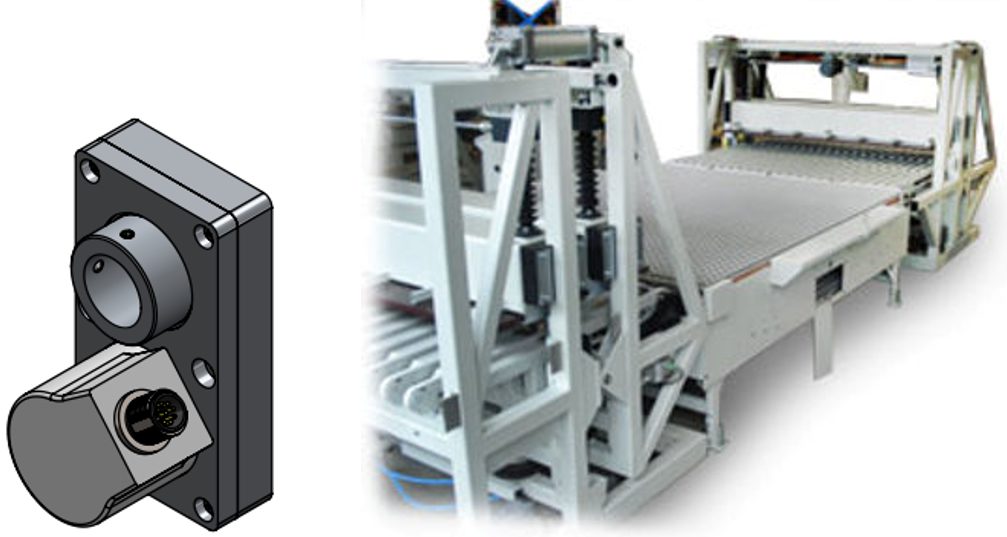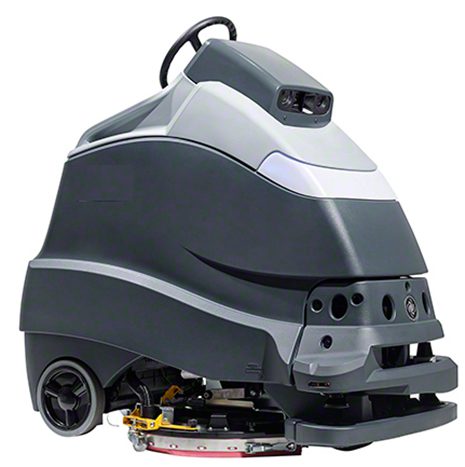Over the past 15 years Everight Position has worked with a lot of unique sensors. But one of our favorites is the POSITAL UCD…H200. When looking back there are two things that make this sensor so special.
- It was a product that was born out of a simple customer request, ‘give us a sensor just like the one we have today, just more reliable.’
- Although a custom sensor developed for a single customer, it has found its way into many different applications.

In 2009 Everight Position was contacted by a packaging company in the Pacific Northwest. Having built thousands of machines the customer knew everything there was to know about corrugated boxes, from how to make them, to assembling them to how to fill them. In one of their existing products, they used a geared based potentiometer to set the width of guides as different corrugated boxes were used on the same line. However, with usage the potentiometers were wearing out and failing at a fast rate. To make matters worse, the performance of potentiometers degrades in the range that they are used most often, resulting in a gradual decrease of accuracy and resolution where it is needed most.
To address this problem, Everight Position worked with POSITAL to develop a solution. To start, a design was made combining the electronics from the then new POSITAL ‘MCD’ Hall-based rotary encoder (since superseded by the UCD series). Because a Hall sensor is a non-contact sensor, there is no wear or dithering to worry about, such as with a potentiometer. As for the housing, a mechanical flange/housing that would provide a 1:1 ‘drop-in’ replacement was designed. The existing cable, connector and pinout were all replicated so that that machines with failed potentiometers could be replaced in the field with no modifications needed.
Further discussions with the customer identified additional ways which the existing sensor could be improved.
- Scaling:
Each machine uses 14-18 of the same rotary sensors, but the output is scaled over different angles. The previous potentiometer-based system required multiple steps, the use of a screwdriver and for the installer to monitor the output of the sensor while completing the scaling process. The scaling then had to be verified and repeated as necessary to counterbalance the minimum and maximum values.
Because the POSITAL solution was based on a Hall-Effect sensor, the screws were replaced by push-buttons and as long as the sensor was powered it could be scaled, even if the sensor was not yet connected to a display or control system. The installer simply pushed both ‘SET’ buttons downs together to enter the scaling mode, pressed the ‘Lim 1’ button to scale the minimum and ‘Lim 2’ to scale the maximum. No counterbalancing or checking was required. The encoder was scaled correctly, the first time, every time.
- Visual LEDs:
POSITAL added LEDs so that the installer would know the state of the encoder. Specifically, the installer could glance at the encoder to determine if the sensor was in its default scaling, in scaling mode, or had already been scaled.
This success story could end there, with a happy customer and thousands of units installed on machines throughout the world. But it doesn’t. Years later a robotics company would be working on a steering system for a commercial grade automated floor scrubber. These weren’t simply an iRobot Roomba knock-off, rather think of the type used at malls, schools, etc. This time they started with the same potentiometer as discussed earlier, but the request was ‘give us a sensor just like the one we have, but with a modern digital output’.

And that is just what happened. With the flexibility of the Hall-based UCD/MCD encoder from POSITAL, the existing H200 design from the corrugated box machinery was able to be quickly adapted to provide a SSI output. Within a week initial drawings and datasheets were defined, samples being delivered shortly thereafter. As an additional benefit, the switch to a digital output also increased accuracy and resolution when compared to the analog potentiometer output.
Since then, the UCD…H200 design has found even more applications. From valve positioning on steam injection heaters to offshore drilling platforms. Its unique ability to combine economical multiturn counting with a large through-hole differentiates it from other sensors. If you have a challenging application give Everight Position a call, it would be great to learn more about your sensor needs whether it require new solution designed from the ground up or perhaps it is a problem that we have seen before, either way we would be happy to help.
Do you have questions?
Reach out to Everright, we are excited to help you with configuration requests or to just better optimize your software to your particular needs.
"*" indicates required fields



